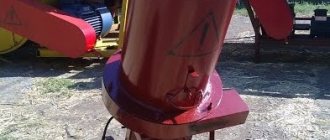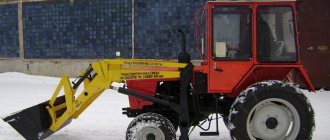First of all, it should be noted that the first to be put into truly mass production in 1964 was the four-ton GAZ-53A truck, equipped with a V-shaped overhead valve 8-cylinder gasoline engine. Two years later, in 1966, the GAZ-52 family was launched into mass production - the vehicle was unified with the GAZ-53A in its base (3700 mm), the new vehicle had a cabin and tail unit unified with the GAZ-53A truck, as well as a frame and elements suspension and braking system. However, the power unit of the GAZ-52 was an in-line lower-valve 6-cylinder - instead of the 115-horsepower ZMZ-53 (like the “53rd” family), a 75-horsepower GAZ-52-01 was installed on this model. There were also differences in the main gear - it was not hypoid, like the GAZ-53A, but conical. The installation of a less powerful engine on the GAZ-52 family entailed a significant reduction in load capacity, which was limited to 2.5 tons. However, in those years there was an opinion that it was trucks of this class that should play the most important role in the national economy of the country. Indeed, the “52s,” intended for use on public roads, were very widely used on collective and state farms, and a significant number of special superstructures were mounted on their chassis. A fairly important role in the GAZ production program was assigned to the onboard GAZ-52-03, which outwardly was almost no different from the GAZ-53A. Unless, having looked closely, one could notice that the height of the wooden platform of the first one is about 15 centimeters less (543 mm versus 680). For unmistakable identification, by the way, the plant initially painted the designation “2.5 t” on the side sides of the GAZ-52-03.
Now about the external differences. For GAZ vehicles of the 52/53 family, the cabs have ALWAYS been unified. Based on the radiator lining, four main types can be distinguished: 1. A grille of this type was installed on experimental cars since 1960, as well as on the cabs of the serial GAZ-52A until 1964 2. Since the end of 1964, the general idea of the design solution for the first production version of the lining was consistent early "ZiLovskaya": headlights at the top, sidelights - coaxially at the bottom. This type corresponded to the first cars of the GAZ-52 family, as well as the GAZ-52-01, GAZ-52-02, GAZ-52-03 and GAZ-53F models. This option is shown in the figure on the left. 3. Since 1975, the sidelights move upward and are located coaxially above the headlights, and the cladding looks like it has a “smile” (pictured in the center). 4. Since the end of 1984, the next, latest version of the cladding has appeared - the grille holes have become longer, the turn signals have each moved closer to their edge (pictured on the right). A slightly modified front buffer without an upper step pad was also installed. All modifications of cars produced during these periods were successively upgraded in appearance. Therefore, today we can find, for example, GAZ-52-03 with all three grille design options. In 1978, stamped stiffening ribs appeared on the roof of the cab and the color scheme of the cars was complemented by blue. Until this point, the 52/53 families were painted in light yellow sand and protective khaki. In the 1960s and early 1970s, café au lait and aqua were also used. It should be noted that, unlike the GAZ-53 family, on which the radiator lining of the third type was painted in a light gray color, GAZ-52 cars always had a radiator grille of the same color as the cab and tail. Since 1986, all new cars have had standard two-lamp combinations installed at the front, with unequal-sized orange-transparent lenses - “sidelights” (turn indicator/side marker) of a new type. In addition, it was possible to outwardly distinguish the GAZ-52 from the GAZ-53 by the wheel rims: the GAZ-52 and modifications had rims with 6 ventilation holes and narrower tires, but the GAZ-53, soon after the start of production, received the more familiar ones to us (and more “load-lifting”) with three holes placed at an angle of 120 degrees. It should be noted that the rims on the 52/53 families are interchangeable and the only reliable difference between the families is the brand of the installed engine.
Modifications
During the production of GAZ-52 models, many different variants were produced. Not all of them made it onto the assembly line; many modifications were rejected for various reasons after the production of prototypes. Models were mass-produced on a regular base (3.3 meters) and an extended one (3.7 meters). Among them were trucks with a wooden platform, truck tractors and chassis for installing vans, tanks, and others.
Overall dimensions of the GAZ 52
The location of the spare wheel was different: on a truck tractor it was mounted vertically behind the rear wall of the cab, on other models it was mounted horizontally under the body. “Semi-finished products” also rolled off the plant’s conveyors, the equipment for which was supplied by other enterprises. For example, the GAZ-52-02 chassis, on which a power take-off and hydraulic pump were additionally mounted. The metal body and other equipment for it were supplied by the Saransk dump truck plant.
As a result, dump trucks SAZ-3503 and SAZ-3504 were assembled, used in agriculture, construction and other industries.
The GAZ-52-01 model, produced from 1966 to 1989, became widespread. This is a chassis on an extended base of 3.7 meters, on which manufactured goods, furniture, grain and other van bodies, tanks and fuel trucks, a sewer truck, water transportation and others were placed.
Appearance of a GAZ-52-01 manufactured goods truck.
The vehicles were used mainly for urban and suburban transportation. The technical characteristics of all GAZ-52 models were basically the same. Here are the basic data of the GAZ-52-01:
- Load capacity, kg - 2500;
- Length/width/height of the cabin, mm - 6150/1965/2190;
- Number of seats (including driver) - 2;
- Weight, kg - 2300;
- Maximum speed, km/h - 70;
- Ground clearance under the rear axle, mm - 245;
- Gasoline consumption per 100 km, liters - 22;
- Gas tank capacity, liters - 90.
History of appearance
The development of a new family of medium-duty trucks at the Gorky Automobile Plant began in the late 1950s.
Then engineers and designers worked on a whole generation of GAZ:










